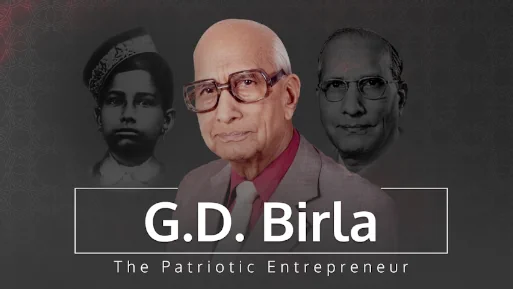Mrs. Rajashree Birla: "Create an articulated social vision and embed it in the business vision"
10 July, 2018 | Mint
ShareRajashree Birla serves as the director of major companies in the Aditya Birla group, including Aditya Birla Nuvo, UltraTech Cement Ltd, Grasim and Hindalco. She also spearheads the group’s corporate social responsibility (CSR) activities through the Aditya Birla Centre for Community Initiatives and Rural Development. The centre focuses on rural development, education, healthcare and sanitation. In recognition of her philanthropic efforts, Birla was awarded the Padma Bhushan in 2011. Edited excerpts from an interview:
The motivation to start: It is the philosophy of caring and giving which is embedded in the Birla family. That has been a great motivator, and, of course, a terrific influencing factor. Philanthropy is accorded as much importance as business projects.
Right from my childhood, I used to feel upset when I would see destitute children, asking for alms on the road.
Almost three decades ago, my husband, Adityaji, and I set up a home for destitute children in Mumbai—the Aditya Birla Centre for the Welfare of Children. We take in boys who are orphans, house them here, and have them trained in vocational skills. So far, we have trained over 3,000 boys. Nearly 90% of them are employed. I think, deep down, there was always this desire to do something that could make a difference.
Focus areas: Under the umbrella of the Aditya Birla Centre for Community Initiatives and Rural Development, we work in 5,000 villages. My work at the centre is supported by Pragnya Ram, who works with me in this area. There are goals set. There is an internal review system, where projects are assessed, under an agreed strategy.
I provide strategic guidance. A committed band of 150 qualified professionals and a 1,500-strong field force provide the traction.
Must-follow rules for projects: Our approach to investing in any initiative is one of collaboration, accountability, and sustainability over the long term. Let me explain a bit.
Nearly 90% of our projects are in villages. All of them are planned in a participatory manner, in consultation with community influencers such as the district authorities, panchayats, the mukhias (headmen), schoolteachers and others. So, our focus areas are fixated on their needs. They wanted their children to be educated. They wanted healthcare. And they wanted to be able to stand on their feet. So, naturally, education, healthcare and sustainable livelihood—the basics necessary to lift them out of poverty—became our focal points.
By involving the community, we are able to nurture a culture of mutuality and alignment.
Developing linkages and calling on experts or key players to become part of the project works very well.
We do not work in silos. Wherever the expertise required is not there with us or in the community, we take recourse to partners. For example, for animal vaccination and artificial insemination, we have to tie up with an expert NGO. We strongly believe in the need to have strong partners who are committed to change.
The current philanthropy landscape: Indian business owners and other philanthropists are taking a closer look at giving strategically. They are applying a business lens to ensure their philanthropy is efficient and effective, and investing in attracting and retaining the best talent to support their giving. They are also collaborating with experts and grass-root organizations, where required, to make sure that the causes important to them are receiving the right attention and effort.
Any rewarding experiences? Being engaged with underprivileged people, and, in our own humble way, trying to change their lives, has been, and continues to be, a soul-lifting experience. The change is palpable and transformative. Polio eradication has been one of the most gratifying projects I was involved with. In 1988, there were 350,000 polio-afflicted in the world. Of these, 200,000 were in India. In 2001, we began a very meaningful collaboration with Rotary International, which had launched a global polio eradication drive. It was a kind of destiny that they approached us for support, which we extended fully. By 2011, we were a polio-free country. What an amazing feat, achieved in such a populous country.
Your lessons for social change agents: The most important lessons we have learnt revolve around four pillars. First, having an articulated social vision and embedding it in the business vision.
Second, planning need-based projects, and having a razor-sharp strategy for execution, factoring milestones, targets, performance management, and accountability. Third, getting our work audited by reputed agencies. And fourth, working in tandem with government agencies, and their development schemes, which foster inclusive growth.
This interview is part of the India Remarkable Givers video series conducted by the Bridgespan Group, a philanthropy advisory.






